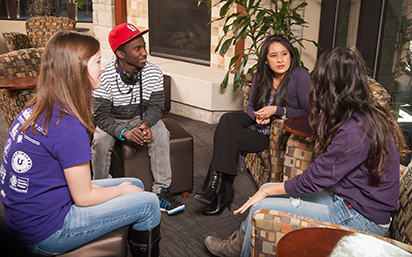
Pay it forward: Five ways you can help the next generation of K-Staters be a success
For K-State students, an internship offers an opportunity to take the skills they’ve
learned in the classroom and apply them in a real-life, on-the-job setting.
Marone Shimekt, a senior studying human resource management at K-State, got a chance
to put her major into action during an internship with the company WaterOne.  “During my internship, I was able to screen applications and conduct interviews, clean
and mine data in preparation for their new HRIS system implementation, and my personal
favorite: developed and presented a business case on diversity and inclusion for the
senior staff.”
“During my internship, I was able to screen applications and conduct interviews, clean
and mine data in preparation for their new HRIS system implementation, and my personal
favorite: developed and presented a business case on diversity and inclusion for the
senior staff.”
If you’re a K-State alumni or friend with a business, the K-State Career Center encourages
you to consider offering an internship to current K-State students. You could help
them get a head start in their future career.
“I believe my time as an intern will positively impact my future career,” Shimekt
said. “Being able to take on challenging initiatives was an experience that has cultivated
my personal and professional growth in ways beyond measure.” Marlaina Markwart, a senior also majoring in human resource management, has benefited
from two HR internships: one at MMC Corp and one at Westlake Ace Hardware.
Marlaina Markwart, a senior also majoring in human resource management, has benefited
from two HR internships: one at MMC Corp and one at Westlake Ace Hardware.
Markwart said in her first internship, she focused mainly on talent acquisition: registering
for career fairs, posting jobs, updating recruitment presentations and preparing recruitment
materials. She also created and managed a month-long, company-wide competition using
an online financial wellness tool called SmartDollar, including a prize system, tracking
employee points, sending weekly emails and coordinating prize distribution.
In her second internship, she processed more than 400 background checks and more than
350 Form W-4s and "change in direct deposit" authorization forms. She also observed
how the company handled COVID-19 cases, helped with four store acquisitions and apprenticed
the recruiting cycle for a corporate role.
“My internships have already impacted my career,” she said. “I accepted a full-time
position in December and I look forward to starting in the Human Resources Leadership
Development Program at Parker Hannifin in June. These opportunities helped me learn
how to be a young professional, allowed me to apply classroom information to the workforce
and establish great contacts in my field.”
Share your career knowledge as a mentor
Are there lessons you’ve learned throughout your career that you’d love to share with
a current K-State student? Why not sign up to be a WildcatLink mentor!
WildcatLink is a networking program that connects K-State students with alumni and
friends for career-related mentoring.
K-State Alumni Association board of directors member Rich Macha ’80 says he has “thoroughly
enjoyed being a mentor in the WildcatLink program,” and he encourages other K-Staters
to consider participating.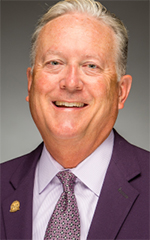 “I hit the jackpot with my first mentee. I was paired with K-State varsity basketball
player Pierson McAtee ’19, ’20. He is on the Big 12 Conference Commissioner’s Honor
Roll and was selected three times as Academic All-Big 12 First Team. I assisted Pierson
to understand the wealth management field he was pursuing as a career and introduced
him to leaders in wealth management. It was a true pleasure getting to know him and
assist him achieve his goals. Pierson is now working at a Kansas City wealth management
firm.
“I hit the jackpot with my first mentee. I was paired with K-State varsity basketball
player Pierson McAtee ’19, ’20. He is on the Big 12 Conference Commissioner’s Honor
Roll and was selected three times as Academic All-Big 12 First Team. I assisted Pierson
to understand the wealth management field he was pursuing as a career and introduced
him to leaders in wealth management. It was a true pleasure getting to know him and
assist him achieve his goals. Pierson is now working at a Kansas City wealth management
firm.
“I’m now assisting my second mentee, Meghan Splichal. We’ve now had two meetings and
have discussed the pros/cons of immediate employment after graduating versus pursuing
law school. She is a very bright student with a tremendous future in front of her.
It’s been a delight getting to know Meghan.
“In both cases, it’s been rewarding to assist these K-Staters achieve their career
goals. It is a wonderful feeling to share advice and help them achieve success. I
enjoy the stimulating conversation and having a connection to a K-State student.”
Stop student hunger
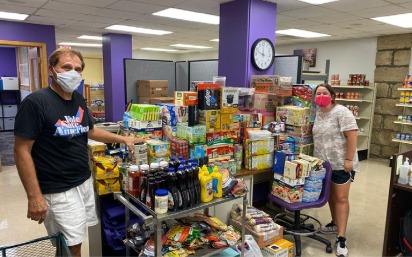 The goal of Cats’ Cupboard — the K-State student food pantry — is to prevent food insecurity from being a barrier
to student success.
The goal of Cats’ Cupboard — the K-State student food pantry — is to prevent food insecurity from being a barrier
to student success.
In a Campus Climate Assessment Project, 39.4% of the students who reported financial
hardship indicated they had difficulty affording food.
In a financial stress study conducted by the Office of Student Life, 14% of student
respondents indicated they did not have enough money to meet their basic necessities.
Furthermore, 51% indicated they didn’t have enough money for groceries at least once
in the three preceding months.
It’s easy to make a donation to Cats’ Cupboard and help stop student hunger, with
options for giving online or dropping off items in person.
Help students help other students
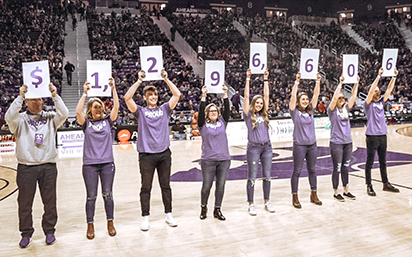 Even while they’re still students, K-Staters learn how to give back. K-State Proud
is a student-led, nationally-recognized fundraising campaign for K-State. Guided by
the leadership of Student Foundation, the campaign encourages students to show their
K-State pride through philanthropy. In the first 13 years of the campaign, students
have raised more than $1.35 million for their peers who are struggling financially.
Even while they’re still students, K-Staters learn how to give back. K-State Proud
is a student-led, nationally-recognized fundraising campaign for K-State. Guided by
the leadership of Student Foundation, the campaign encourages students to show their
K-State pride through philanthropy. In the first 13 years of the campaign, students
have raised more than $1.35 million for their peers who are struggling financially.
Drive with pride…and support scholarships
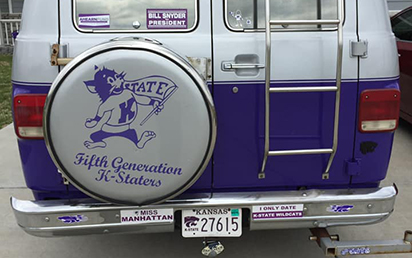 Did you know that something as simple as purchasing an official K-State License Plate
can help you invest in future generations of K-Staters?
Did you know that something as simple as purchasing an official K-State License Plate
can help you invest in future generations of K-Staters?
Since the program began in 1996, the tax-deductible royalties paid on K-State License
Plates have raised more than $5 million for student scholarships and recognition of
achievements.
K-State License Plates are currently available in Kansas, Maryland and Texas. Find
out how you can get your plate today:

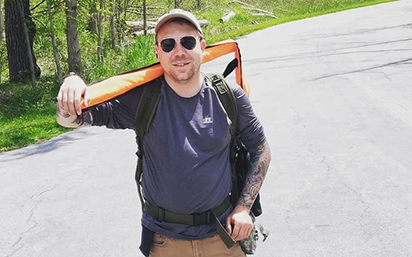
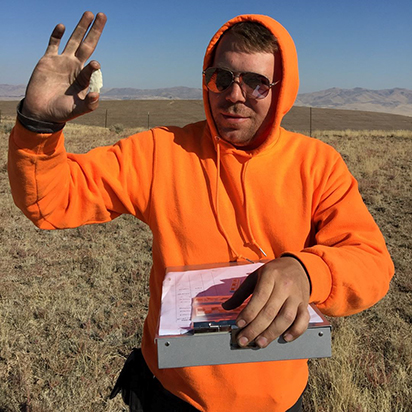 Moran spent the first part of his career working as an archeologist for the federal
government.
Moran spent the first part of his career working as an archeologist for the federal
government.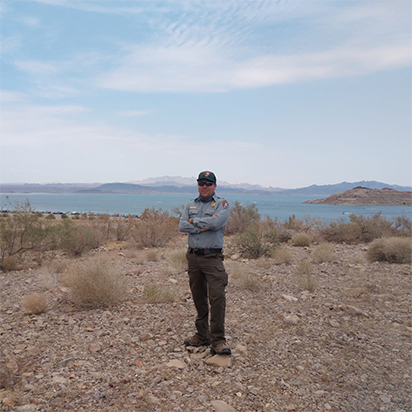 Moran is currently based in Las Vegas, Nevada, and now works an interpretive Park
Ranger for the Lake Mead National Recreation Area, near Hoover Dam.
Moran is currently based in Las Vegas, Nevada, and now works an interpretive Park
Ranger for the Lake Mead National Recreation Area, near Hoover Dam.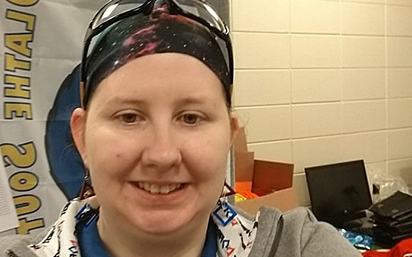
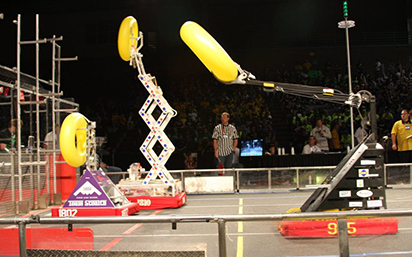 For the uninitiated, robotics programs challenge teams of students to build and program
robots, which they then take to competitions.
For the uninitiated, robotics programs challenge teams of students to build and program
robots, which they then take to competitions.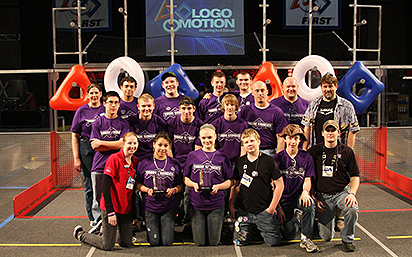 Since high school robotics teams must do a lot of their own fundraising, a team also
needs students with a knack for business. Lucas served as a treasurer for her team.
Since high school robotics teams must do a lot of their own fundraising, a team also
needs students with a knack for business. Lucas served as a treasurer for her team.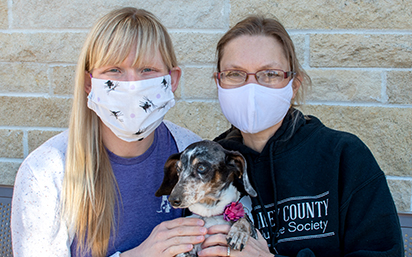
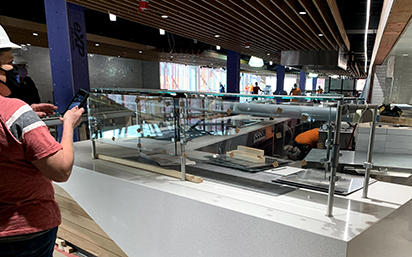
 The Derby renovation process began in November 2019. To allow the contractor, Coonrod
and Associates Construction Co. Inc., to proceed at full speed and adhere to the timeline
projecting a reopening for fall 2020, the building was closed following the university’s
2020 spring break. But as the COVID-19 pandemic progressed through the summer, construction
supply chain delays and other complications arose and forced K-State’s Housing and
Dining Services to make the difficult decision to postpone the opening for another
semester. At this time, a definitive date for total project completion has not been
set.
The Derby renovation process began in November 2019. To allow the contractor, Coonrod
and Associates Construction Co. Inc., to proceed at full speed and adhere to the timeline
projecting a reopening for fall 2020, the building was closed following the university’s
2020 spring break. But as the COVID-19 pandemic progressed through the summer, construction
supply chain delays and other complications arose and forced K-State’s Housing and
Dining Services to make the difficult decision to postpone the opening for another
semester. At this time, a definitive date for total project completion has not been
set. The renovation includes a new entrance and other cosmetic improvements on the southeast
corner of the building; new classroom, meeting spaces and hall entries on the first
floor; and a new single-staircase entry to the food service area on the second floor.
A new open dining experience full of natural light surrounds the production and service
areas. Students needing food accommodations have access to an enclosed space with
foods and serviceware that supports enjoyable dining experiences. A dedicated breakfast
space with waffles, toast, cereal and other self-service options will open when community
health guidelines permit. Wildly popular, not surprisingly, is the beautiful new wood-fired
pizza oven.
The renovation includes a new entrance and other cosmetic improvements on the southeast
corner of the building; new classroom, meeting spaces and hall entries on the first
floor; and a new single-staircase entry to the food service area on the second floor.
A new open dining experience full of natural light surrounds the production and service
areas. Students needing food accommodations have access to an enclosed space with
foods and serviceware that supports enjoyable dining experiences. A dedicated breakfast
space with waffles, toast, cereal and other self-service options will open when community
health guidelines permit. Wildly popular, not surprisingly, is the beautiful new wood-fired
pizza oven.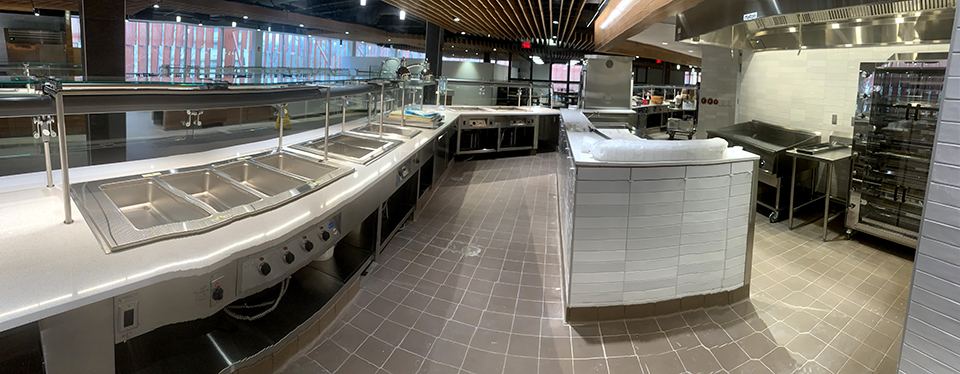
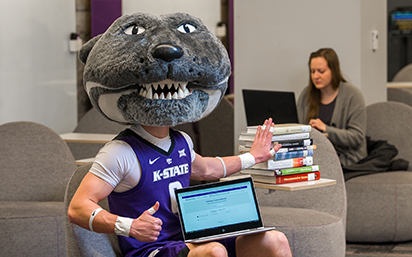
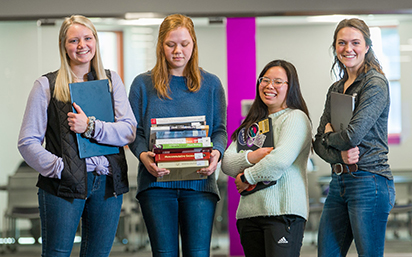 Ivan Bueso-Interiano, senior in animal science, was able to experience the benefits
of this program when he used a digital textbook for Chemistry I and II.
Ivan Bueso-Interiano, senior in animal science, was able to experience the benefits
of this program when he used a digital textbook for Chemistry I and II.